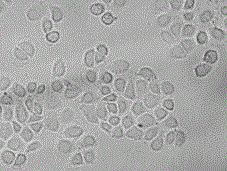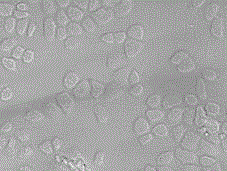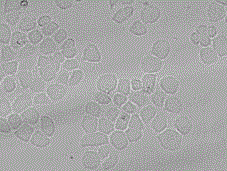Method for applying calixarene fluorescent probes to fluorescent imaging of Zn<2+> and F<->
A fluorescent probe and calixarene technology, applied in the field of analytical chemistry, achieves the effects of simple imaging method, good membrane penetration, and high luminescence yield
- Summary
- Abstract
- Description
- Claims
- Application Information
AI Technical Summary
Problems solved by technology
Method used
Image
Examples
Embodiment 1
[0040] Embodiment one: the preparation method of each solution, reagent among the present invention
[0041] (1) Preparation method of probe 1 and probe 2 solutions: weigh 13 mg of probe 1 and or probe 2, and use THF / H 2 O (THF accounted for 10% by volume) was dissolved and prepared into a 100mL solution with a concentration of 1.00×10 -4 mol L -1 ;
[0042] (2) Zn 2+ Standard solution: weigh 37mg of analytically pure Zn(ClO 4 ) 2 , dissolved in normal saline, and prepared into a 100mL solution with a concentration of 1.00×10 -3 mol L -1 ; Dilute step by step with normal saline to an appropriate concentration as needed;
[0043] (3)F - Standard solution: Weigh 26mg of analytically pure tetrabutylammonium fluoride, dissolve it in normal saline, and prepare a 100mL solution with a concentration of 1.00×10 -3 mol L -1 ; Dilute step by step with normal saline to an appropriate concentration as needed;
[0044] (4) 75% ethanol solution: Add 75mL of absolute ethanol to ...
Embodiment 2
[0051] Embodiment two: the culture of PC3 cell and HeLa cell
[0052] (1) Recovery cells
[0053] Take out the PC3 cells and HeLa cells from the -80°C refrigerator, place them in 37°C water and shake the cell cryopreservation tubes quickly, and thaw them completely within 1-2 minutes. 11ml of the culture solution prepared in Example 1 (PC3 cells plus improved RPMI-1640 culture solution, HeLa cells plus Gaotang DMEM culture solution) were mixed evenly, and the cell suspension was centrifuged at 1000r / min for 5min to remove For the supernatant, the cells precipitated at the bottom and the culture medium were lightly blown and mixed, and then transferred to the culture bottle, so that the volume of the culture solution in the culture bottle was within 5-7mL, and placed at 37°C, containing 5% CO 2 cultured in an incubator.
[0054] (2) Observation—passage—grafting
[0055] Change the culture medium once a day, and observe the growth of the cells under a microscope until the PC3...
Embodiment 3
[0056] Example 3: Probe 1 to Zn in living PC3 cells 2+ , F - fluorescence microscopy
[0057] Group A: Add 10 μmol·L to 3 wells of the cell culture plate -1 Probe 1 solution (90% medium, 9% H 2 O, 1% THF, v / v) mixed solution; then add 20 μmol·L to the other 3 wells of the cell culture plate -1 Probe 1 solution (90% medium, 9% H 2 O, 1% THF, v / v) mixed solution at 37°C, containing 5% CO 2 Incubate in the incubator for 30 minutes, wash twice with fresh modified RPMI-1640 medium, place it under an IX-71 fluorescent inverted microscope for bright field and dark field imaging, and the cells show no fluorescence. (attached Picture 1-1 , 1-2 ). The PC3 cells in the above 6 wells incubated with probe 1 were immersed in a one-to-one correspondence with a concentration of 10 μmol L -1 Zn 2+ solution (90% medium, 10% H 2 O, v / v) in the mixed solution, 50 μmol L -1 Zn 2+ solution (90% medium, 10% H 2 O, v / v) in the mixed solution, 100 μmol L -1 Zn 2+ solution (90% medium, ...
PUM
 Login to View More
Login to View More Abstract
Description
Claims
Application Information
 Login to View More
Login to View More - R&D
- Intellectual Property
- Life Sciences
- Materials
- Tech Scout
- Unparalleled Data Quality
- Higher Quality Content
- 60% Fewer Hallucinations
Browse by: Latest US Patents, China's latest patents, Technical Efficacy Thesaurus, Application Domain, Technology Topic, Popular Technical Reports.
© 2025 PatSnap. All rights reserved.Legal|Privacy policy|Modern Slavery Act Transparency Statement|Sitemap|About US| Contact US: help@patsnap.com



